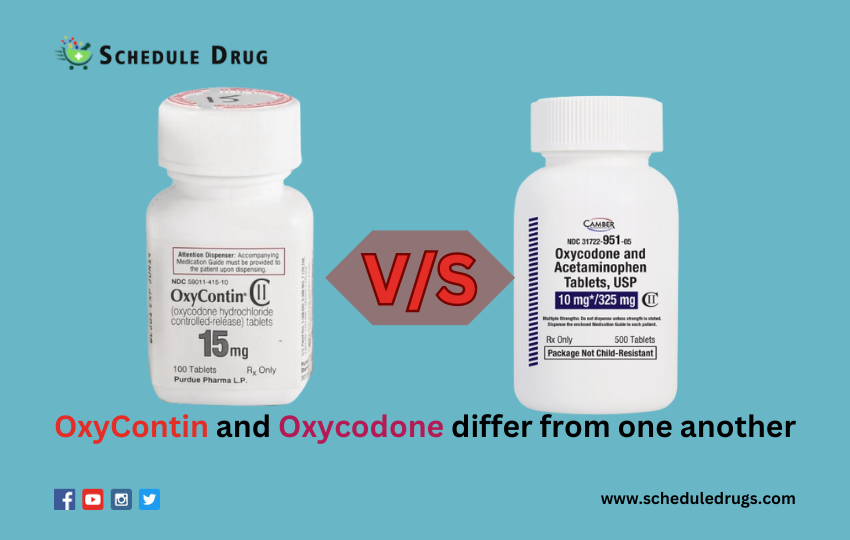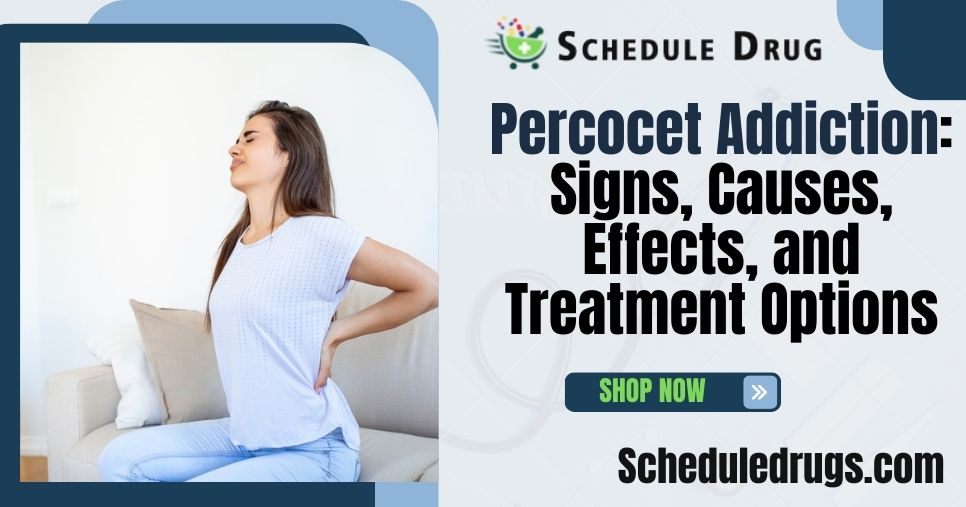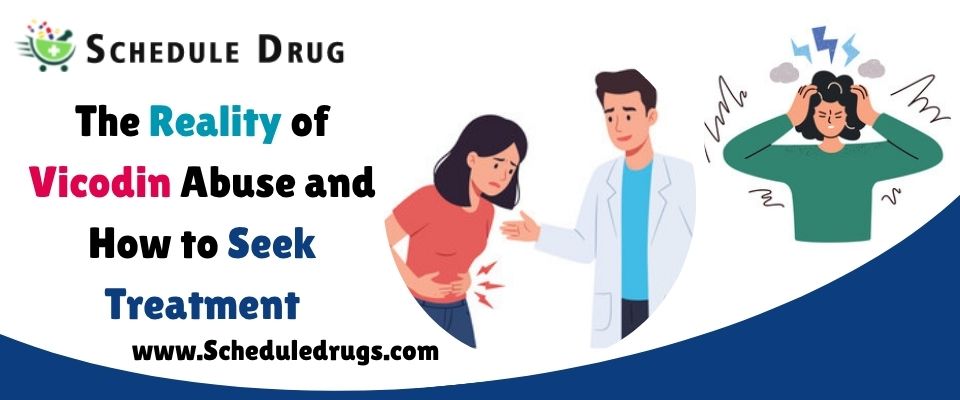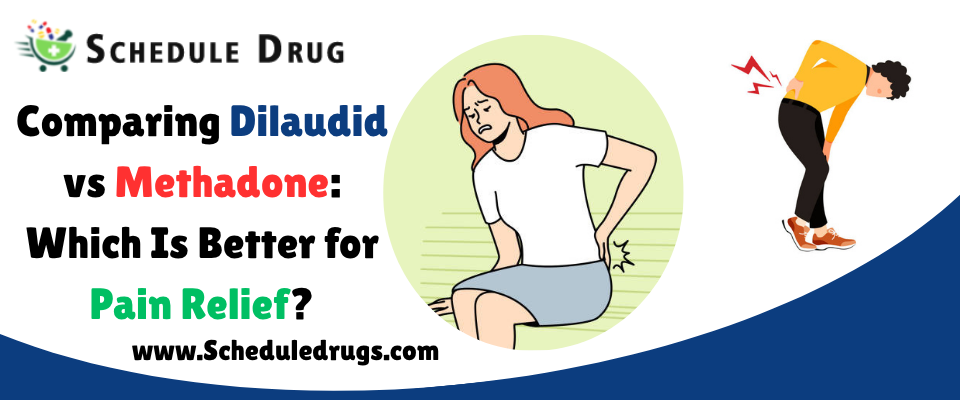Difference between OxyContin and Oxycodone
OxyContin and Oxycodone are two prescription medications with the same active ingredient, such as Oxycodone. Oxycodone is an IR (immediate-release) tablet, while OxyContin is an ER (extended-release) formulation. Doctors and pharmacists commonly prescribe these medicines for treating and managing pain.
Depending upon the type of pain, the pharmacist can choose OxyContin or Oxycodone. Following are the differences and similarities between OxyContin and Oxycodone. Oxycodone is a generic version, and Oxycontin is a branded version. If you want to use a generic version of this medicine, you may buy Oxycodone online from an appropriate place.
But it would help if you remembered that the generic version is the most addictive and shows its effects for less time. For short-term pain treatment, you may use the generic version, such as Oxycodone. On the other hand, if you want a branded version of this medicine, you may buy OxyContin online from the same place. Branded version is less addictive than the generic version and can be used for long-term treatment. But you should consult your pharmacist before using any of these because they both are effective in their way.
Similarities between OxyContin and Oxycodone
Because OxyContin and Oxycodone are similar medicine, just in various formulations, both work in the same way by binding to specific receptors in our brain known as opioid receptors. Both are relatively selective for one type of opioid receptor, the mu-opioid receptor. OxyContin and Oxycodone are full agonists at the mu receptor. They both do not have a ceiling effect for pain relief, so higher dosages are associated with increased pain relief.
However, the risk of overdosage and side effects, such as CNS and respiratory depression, increases with higher doses. You may take OxyContin and Oxycodone to relieve moderate-to-severe pain in the body. However, OxyContin should only be considered in those with chronic severe pain that has already found a trial of Oxycodone helpful.
Both relate to the class of medicines called opioids or opioid analgesics. They can also be called narcotic analgesics. OxyContin and Oxycodone are habit-forming, and there is a considerable risk of physical dependence and abuse with these medications. Please don’t take either Oxycodone or OxyContin during pregnancy period or breastfeeding.
Difference between OxyContin and Oxycodone
OxyContin and Oxycodone are mainly the same substance, but the significant difference is that OxyContin is a long-acting form of Oxycodone. OxyContin releases Oxycodone more slowly and continuously over twelve hours and only requires to be given two times daily. Oxycodone is short-acting and relieves pain for an average of 4 to 6 hours, so it needs to be given four to six times a day to provide pain relief for the whole day.
Oxycodone is commonly given for acute pain following a trauma or surgery. In contrast, Oxycontin may be provided for long-term or chronic pain. OxyContin must only be considered in people with chronic severe pain who have already found a trial of Oxycodone helpful. OxyContin can also be called a controlled-release or ER- extended-release tablet.
It has been designed to release the active drug, Oxycodone in two phases. The first layer permits the initial rapid release of Oxycodone drug from the pill’s surface, providing pain relief within just twenty minutes. The inner layer of the drug slowly releases the remainder of Oxycodone over twelve hours. The decision to prescribe OxyContin and Oxycodone shouldn’t be taken lightly.
These medications have been associated with long-term psychological and physical dependence, even when prescribed for conditions as innocuous as dental pain. OxyContin and OxyCodone are part of the narcotic family of drugs, so they are subject to strict regulation due to their potential for abuse, misuse, and addiction.
Which one is more effective? OxyContin or Oxycodone?
The effectiveness of OxyContin and Oxycodone depends on what a healthcare provider or doctor has prescribed you the medicine for. OxyContin can be preferred for people with chronic, severe pain that lasts all day because its effects typically last 24 hours with twice-daily dosing.
For people with acute pain, such as following a trauma or surgery, Oxycodone is usually preferred because it works faster and is available in combination with other pain-relieving medications, such as ibuprofen or acetaminophen.
Oxycodone can be used to treat severe pain, which is uncontrolled by alternative, nonopioid pain killers, such as that caused by:
- Injuries
- Certain medical conditions (like shingles)
- Trauma
- Break-through pain that happens during daily dosing of OxyContin
OxyContin can treat or manage severe pain enough to require daily, around-the-clock, long-term treatment. For this reason, no alternative medicine (like nonopioid medications or immediate-release opioids) has proved adequate. OxyContin must not be used on an “as needed” basis. There is a higher risk of overdose and death with long-acting opioid formulations (also called controlled-release or extended-release) such as OxyContin.
Addiction or dependence
Both relate to a class of medications known as opioid analgesics or opioids. They are also sometimes known as narcotic analgesics. OxyContin and Oxycodone are habit-forming or addictive, and these medications have a considerable risk of abuse and physical dependence. If we talk briefly, OxyContin and Oxycodone have various side effects.
When people use these medicines, the brain is impacted in a way that causes addiction, just as with an opioid. Addiction is a disorder that may develop due to opioid usage because opioids release pleasurable chemicals into the brain. The brain eventually needs more of the drug to get the same effects.
OxyContin drug is less likely to cause addiction than Oxycodone because it is sustained release. However, this has not always been proven because people crush the pills and administer them in other ways to circumvent the sustained-release mechanism of the drug. You may buy OxyContin online if you want fewer chances of addiction.
OxyContin vs. Oxycodone precautions
You should never use OxyContin and Oxycodone drugs if you have breathing problems, severe asthma, or blockage in your intestines or stomach. If someone uses these drugs during pregnancy time may cause harmful withdrawal symptoms in the newly born baby. Using these drugs with alcohol can harm our bodies, and we may get unwanted side effects.
Taking these medications with other medicines that cause slow breathing or drowsiness can also be harmful. You should consult with your pharmacist or healthcare provider before using Opioids if you are breastfeeding. Tell your doctor immediately if you see severe drowsiness or slow breathing problem in the newborn child. Always take Opioids the same as instructed by your pharmacist.
You must follow the directions on your medicine prescription label and read all guidelines carefully. You should never use Opioids in higher amounts or longer than the prescribed time. Tell your pharmacist or healthcare provider if you sense an increased urge to take more Opioids. Do not share your medications with another person even If their symptoms are the same as yours.
You must consult a pharmacist or doctor before sharing Oxycodone and OxyContin. These drugs may cause overdose, addiction, or even death if someone misuses them. Keep your Opioid medicines in a place where other people can’t get to them. If someone sells OxyContin and Oxycodone without permission or a legal license, it is against the law.
You should Swallow the pill to avoid exposure to a fatal overdose. Never chew, crush, break, or melt these medicines. Do not store the remaining opioid medication. A single dose can be lethal to someone who has accidentally or improperly used this drug. Ask your pharmacist for the location of your disposal or drug recovery program. If you do not have a recovery program, flush the unused or leftover medicine into the washroom.
Drug Interactions
OxyContin and Oxycodone contain the similar medicinal ingredient, and they have the same drug interactions, such as:
- Antibiotics, such as erythromycin and clarithromycin
- Antifungal agents, such as ketoconazole and itraconazole
- Migraine medicines, such as sumatriptan, almotriptan, and eletriptan
- Antidepressants, such as monoamine oxidase (e.g., phenelzine, tranylcypromine), tricyclic antidepressants (example, amitriptyline), or SSRIs (e.g., sertraline, fluoxetine)
These are not a complete list, but these are the details of the most important drugs that can interact with OxyContin and Oxycodone.
Side effects OxyContin and Oxycodone are a very effective medicine for those who suffer from pain. Here we will mention their side effects. Both contain similar medical ingredients, therefore; they have the same common side effects, such as:
- Addiction, dependence, constipation
- Insomnia (difficulty sleeping), abnormal dreams
- Dizziness, drowsiness, flushing
Now we will see the severe side effects of these drugs, such as:
- Breathing problems
- Allergic reactions, such as itching, rash
- Unusual tiredness or weakness
Although these are not a complete list of side effects of OxyContin and Oxycodone. Ensure to buy these drugs online from a suitable online pharmacy to see a positive impact on your body.



